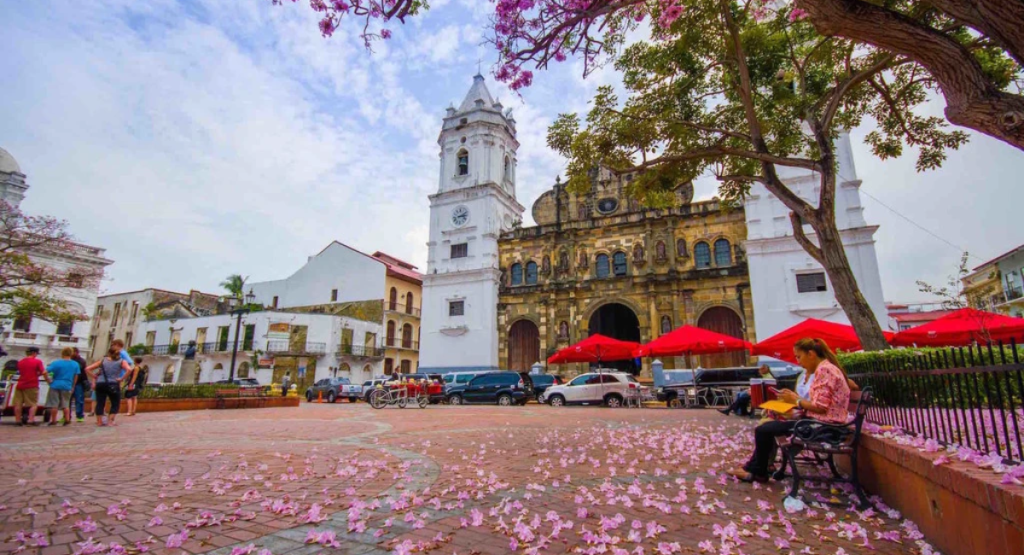Panama’s colonial heritage is a testament to its rich history and the influence of Spanish culture and architecture. As a crossroads between the Atlantic and Pacific, Panama has been a significant hub for trade and exploration for centuries. In this article, we will delve into Panama’s colonial past and explore the fascinating remnants of Spanish influence that can still be seen today.
Immerse yourself in the rich tapestry of Panama’s colonial heritage, where history comes alive in captivating splendor. Explore the colonial gems scattered across the country, such as Casco Viejo in Panama City, with its charming cobblestone streets and beautifully preserved architecture.
Wander through the centuries-old plazas, visit historic cathedrals, and delve into museums that unveil the stories of Panama’s past. Feel the echoes of Spanish colonial influence, evident in the ornate balconies and elegant facades. From the colorful facades of Portobelo’s forts to the UNESCO-listed Panama Viejo, the remnants of the country’s colonial past transport you to a bygone era.
Discover the fusion of cultures, the tales of conquest and trade, and the enduring legacy of Panama’s colonial heritage that shapes its present-day charm.
The Spanish Conquest:
Panama was first discovered by the Spanish explorer Rodrigo de Bastidas in 1501, marking the beginning of Spanish colonization in the region. The Spanish quickly recognized Panama’s strategic location and established Panama City as a vital trading and administrative center. The city became a key hub for transporting riches from the Inca Empire in South America to Spain.
Casco Viejo (Old Quarter):
One of the most iconic areas showcasing Panama’s colonial heritage is Casco Viejo, also known as the Old Quarter. This historic district in Panama City is a UNESCO World Heritage site and features a captivating blend of Spanish, French, and American architectural styles. Strolling through its narrow streets, you can admire beautifully preserved buildings, such as the Metropolitan Cathedral and the National Theater.
Panama Viejo (Old Panama):
Another significant site is Panama Viejo, the original Panama City founded by the Spanish in 1519. Although partially destroyed by pirate attacks in the 17th century, Panama Viejo provides a glimpse into the city’s early colonial history. The ruins include the Cathedral Tower and the remains of colonial buildings, offering visitors a chance to step back in time and imagine the bustling city it once was.
Churches and Religious Art:
Panama’s colonial heritage is also evident in its churches and religious art. The San Jose Church in Casco Viejo is a prime example, renowned for its golden altar, intricate woodwork, and religious relics. The church houses the famous Golden Altar, which was spared from pirate raids by being painted black to disguise its value. Other notable churches, such as the Church of San Francisco and the Church of Santo Domingo, also exhibit exquisite religious art and architecture.
Museums and Cultural Centers:
To further explore Panama’s colonial history, visit museums and cultural centers dedicated to preserving and showcasing the country’s heritage. The Museum of Colonial Religious Art in Panama City displays a remarkable collection of religious artifacts and artworks. The Interoceanic Canal Museum provides insights into the construction of the Panama Canal and its impact on the region.
Conclusion:
Panama’s colonial heritage is a treasure trove of Spanish influence and historical significance. From the enchanting streets of Casco Viejo to the ruins of Panama Viejo, the remnants of Panama’s colonial past offer a captivating glimpse into the country’s history and cultural evolution. Exploring the churches, museums, and cultural centers allows visitors to appreciate the architectural splendor and artistic legacy left by the Spanish. As you immerse yourself in Panama’s colonial heritage, you will gain a deeper appreciation for the fusion of cultures that has shaped this remarkable country.

